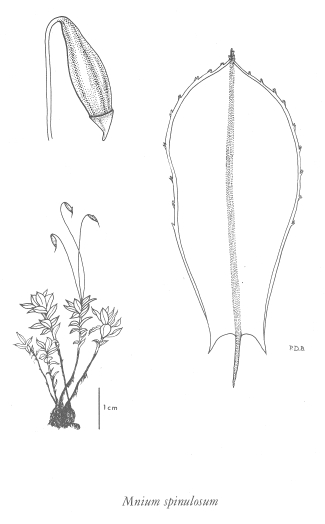E-Flora BC: Electronic Atlas of the Flora of British Columbia
Mnium spinulosum B.S.G.
red-mouthed leafy moss (largetooth calcareous moss) Mniaceae Species Account Author: Wilf Schofield Extracted from Some Common Mosses of British Columbia Introduction to the Bryophytes of BC
|
|||||||||||||
